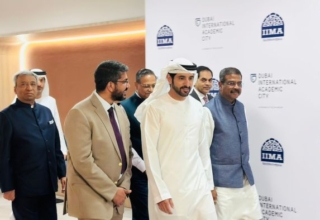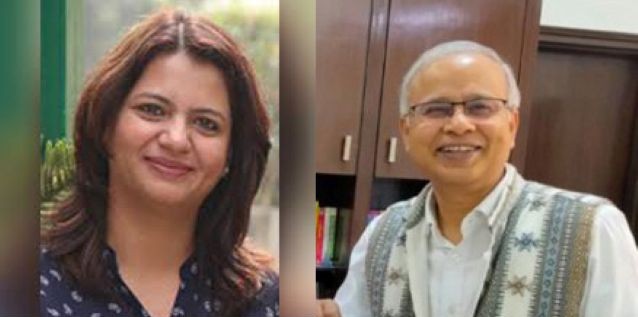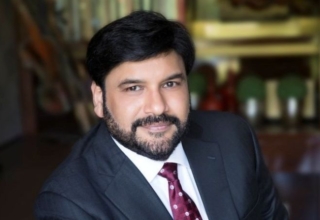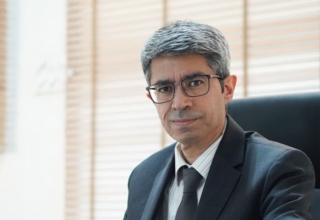
Loader, excavator, crane, crusher, paver, mixer, grader and many more construction equipment offer challenging yet rewarding jobs as infrastructure development and housing becomes a priority national program in India
Roads & highways, rural connectivity, urban infrastructure including metro rail projects, ports & airports, industrial corridors, dedicated freight corridors, ‘100’ smart cities, irrigation & river linking, power projects, mining, new housing project, sewerages & retrofitting of old buildings — all involve construction & maintenance. With bulk of the construction activity already mechanized with high end equipment and technology, there is a rising demand for trained operators, mechanics and fleet supervisors. In fact, the number of 60,000 machine units currently operating in the India every year is slated to reach 1, 50,000 in next 10 years thereby raising the demand for trained operators to over two lakh alone. The Indian Construction Equipment Manufacturers Association (ICEMA), a network of over 65 leading equipment supplier companies with support from Confederation of Indian Industries (CII), in 2014, created the Infrastructure Equipment Skill Council (IESC) and entered into a agreement with National Skill Development Corporation (NSDC) to help skill workforce for construction equipment in India. IESC CEO, H S Mohan in a conversatin with Autar Nehru speaks more on the initiative and progress
 We have an ambitious target of training one million operators, mechanics and supervisors in next 10 years
We have an ambitious target of training one million operators, mechanics and supervisors in next 10 years
Please tell us how and why was Infrastructure Equipment Skill Council (IESC) formed?
Let me begin by telling you that currently we use 60,000 machine units a year at various construction sites in India. This number is likely to increase by 250% by 2020 and we may have 1.5 lakh machines operating in the field per year. Now when these machines go to the field, where are the operators and where are the mechanics? An important aspect is that these machines are highly sophisticated and most of them are manufactured outside India. So, these don’t come with two sets of standards, one for India and another for the rest of the world. We need to bring these standards and practices into India mainly for three things productivity, safety and completion within expected time.
In absence of a skilling framework and institutional mechanism, what OEMs (original equipment manufacturers) used to do and are still doing is to train operators, mechanics on their own. The larger ecosystem doesn’t know about it and there is no commonality. So, a need was felt that we need to devise a national curriculum framework and certification for this very important segment, whereby we can have certified people operating these machines. So that is how the ICEMA in consultation with the union skills ministry brought the proposal for IESC, which then got NSDC funding and partner status.
What is the mandate of IESC’s work and how far has it succeeded in laying the foundation for realizing its objectives?
We started in January 2015 and LabourNet – Deloitte consortium was appointed as Consultants to develop the National Occupational Standards (NOS) and Qualification Packages (QP) for Operators and Mechanics to bring common standards. For this we went to OEMS to know about the role of operator, what is he supposed to know and do. We mapped skill gap from top man to lower man. We also went to customers to understand their requirement for each type of equipment. In India there is no legislation and anybody can operate a machine. Big and organized customers have a system in place there are a lot of medium and small customers of these machines in semi-organized or unorganized segment who have use of these machines but not skilled manpower to operate them. We got a feedback from them. After this, I would say in the last two years we have developed QPs for 35 equipment for construction, mining, material handling etc. according to market requirement.
The next step was the training, how and where to conduct it. For this we devised a system of affiliating training centres. This system involves selection of a training centre after third part inspection of the facility and if there are some minor gaps in terms of add on infrastructure items such as library, projector etc , we provide it and in case there is too much desired then we reject it. Once a training centre is affiliated and approved, then begins the training. The centre has to adhere and align its training to the curriculum devised according to QP. A training centre is given a login in through which it has to register on NSDC site and upload its batch. Once the training is over, we send assessors, which can are a third party to conduct an exam and test of these trainees and whosoever passes qualifies and the results is put online. After this they received aadhar-based certification without the danger of this being duplicated.
That sounds good. Is there a way these qualified people are supported in placements?
Indirectly yes. The names of successful qualified people along with their phone numbers are published on websites of ICEMA, NSDC, IESC etc so that anybody can assess the data and get in touch with the candidate of his choice/area depending on requirement. So that way it helps both ways. This said, one of the bigger roles is to provide jobs to school and college drop outs so that they move on in life productively and are mainstreamed in economy. For us as an industry it means getting right people for the right job.
Now tell us about criteria to get into your training centres for certification and also explain to us the training process?
For entry level as operator the candidates has to be preferably 8th class pass because they need to make some reports. For a senior level two years work experience is a must. As far as mechanics are concerned they have to be either ITI trained or diploma holders. Then, there are also job roles for supervisor plant operation and maintenance for which a person has to be either a diploma holder or a graduate engineer. The training course is of one-month duration and 70% of it is practical on actual sites so they have the real feel of machines.
What about a large section of people who are already working in this sector?
Oh yes, you are referring to a large pool of skilled workers who have experience but no certification. For them recognition of prior learning is a boon. All they have to do is to register for RPL. They will attend a refresher kind of course for five days and then they would be assessed by a third party assessor agency and if successful will be certified. Then they can apply for another level in future and this way can reach upto level 7 of NSQF and become supervisors just like diploma engineers.
Do drivers have any advantage in these kinds of job?
Knowledge of driving is not necessary but if someone has it, it helps as he has a feel of it already. And, then trucks and other vehicles are widely used in construction business, so yes in that sense drivers have some more opportunities.
Two years have passed since you came into existence, so what does the report card read like?
In the first year after making QPs for 35 equipments, we trained about 1500 people. This year we have a target of 5000 people and this will gradually increase and eventually we are looking at training a million people. We have already 43 training centres spread across the India and these will also increase with time.
What else is planned in immediate future to make your work more visible, acceptable and if I may add effective?
We will be creating centres of excellence where the candidate will have a choice of training for any equipment. We would tie up with ITIs to take it to more people. Already we have tie ups with a couple of ITIs in Noida and Sholapur. We are still in infancy but as we move along, we’ll make ourselves felt on the construction map of India.








